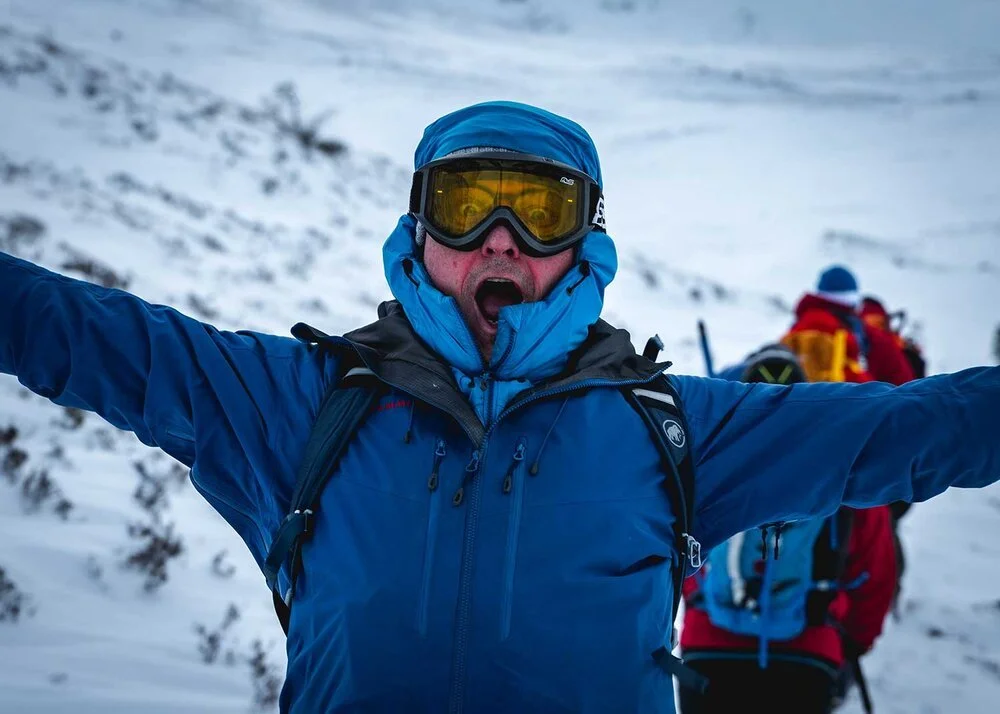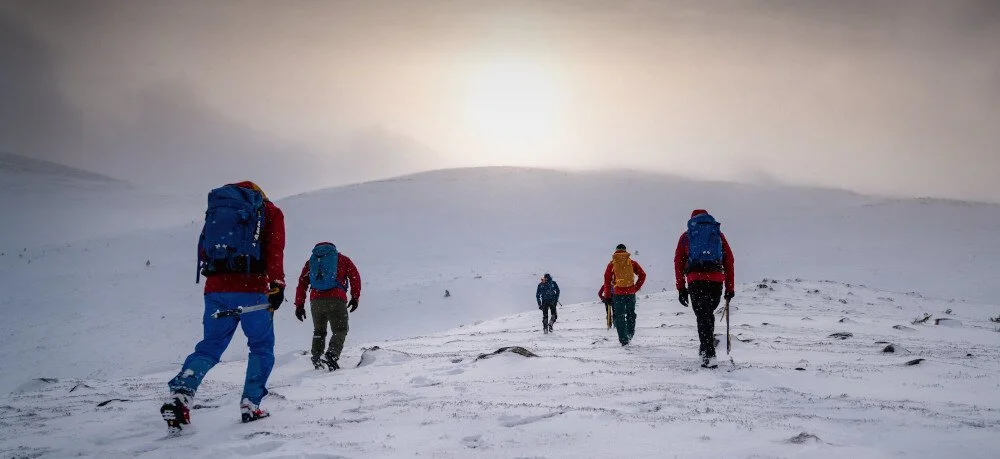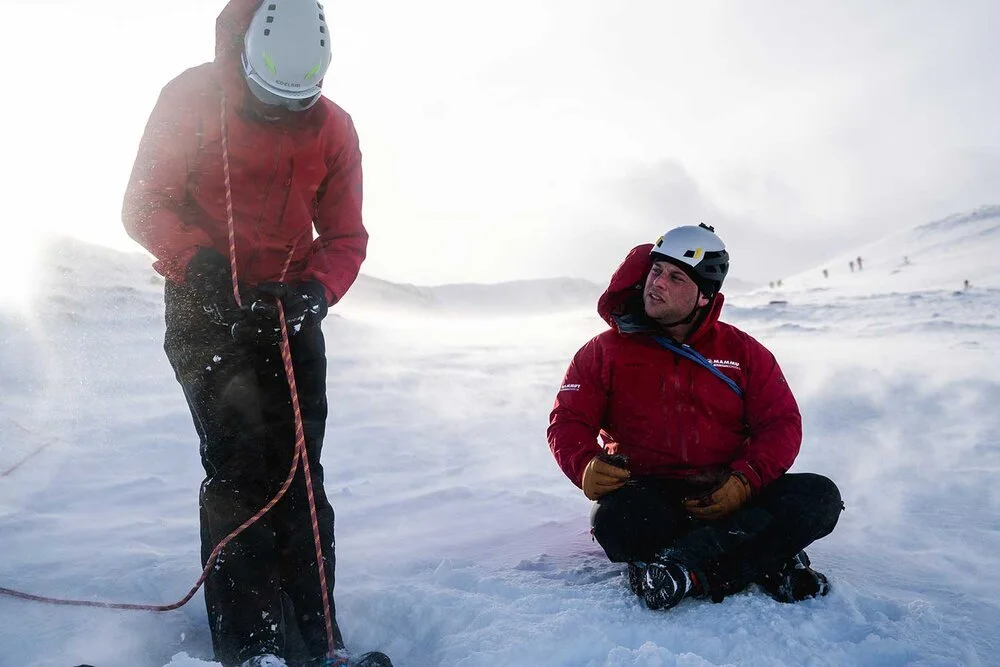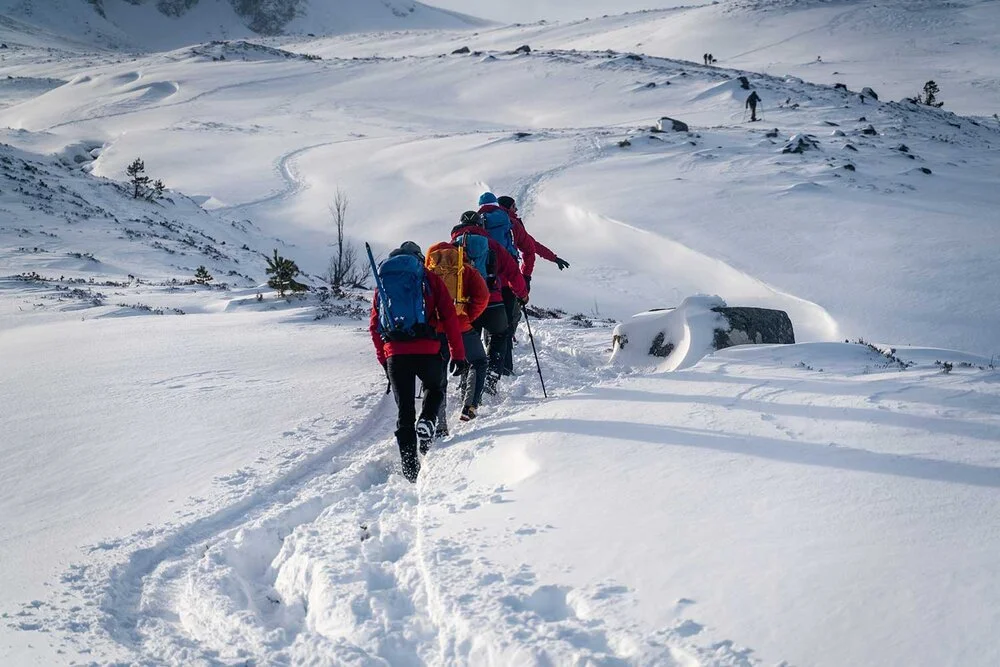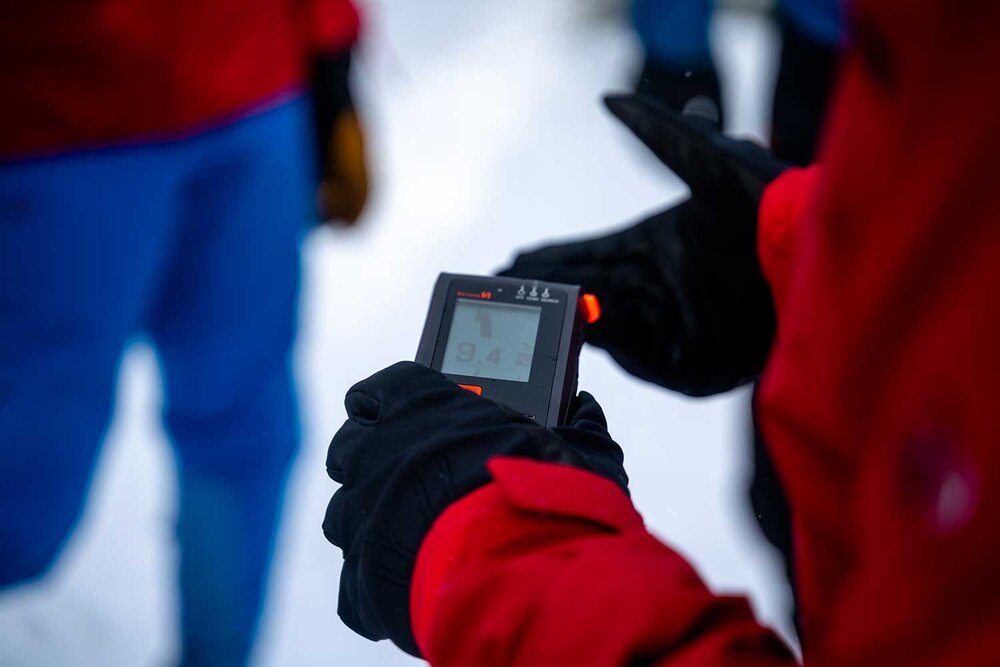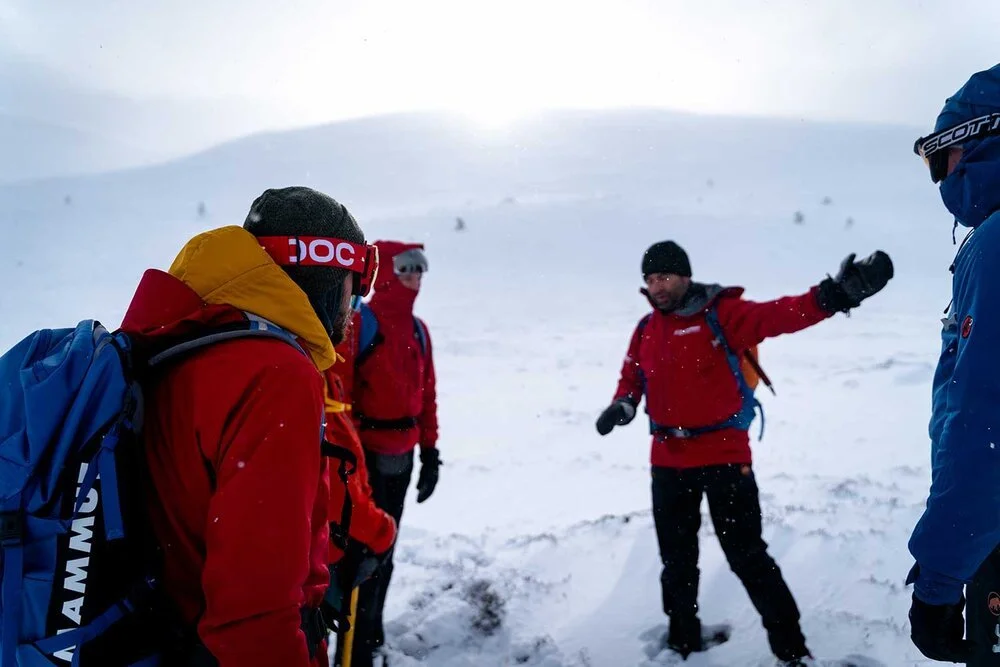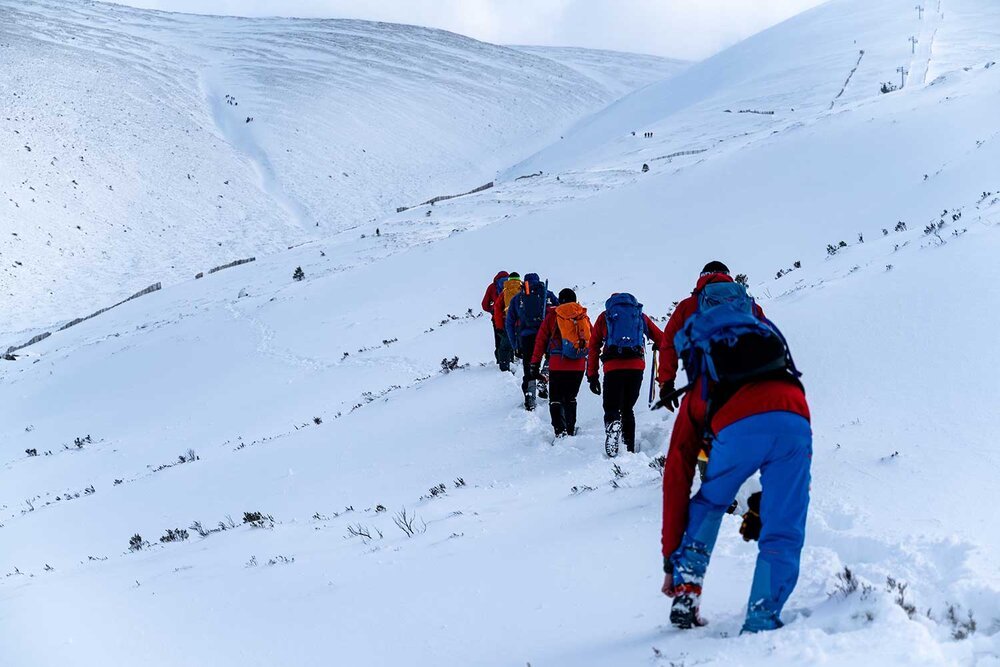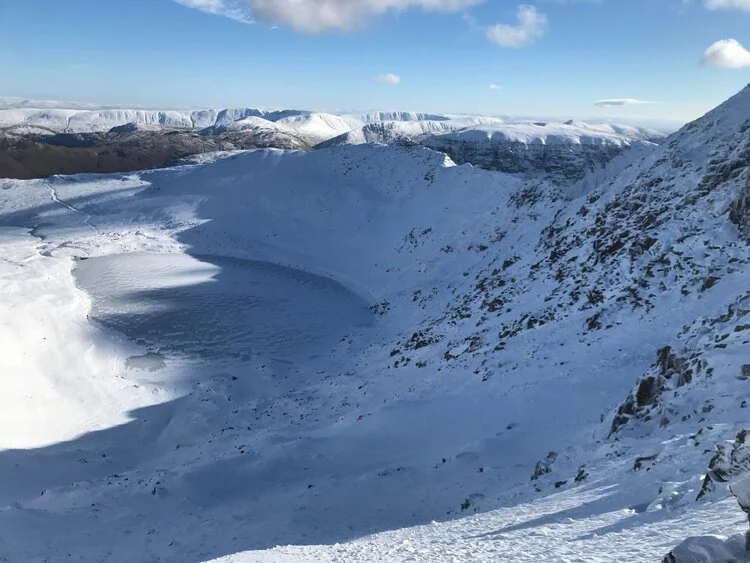Beginner’s Guide to Mountaineering and Winter Walking in the UK
You may have read things about winter walking in the hills and feel a little daunted. However, it can be one of the most exciting and rewarding adventures to have; there’s no better way to get that exhilarating feeling than that of heading up into the snow covered mountains.
Sam Sykes, Head of the Mammut Mountain School UK, says: “The arrival of winter in the UK Mountains transforms the beauty, challenge and risk for all those who enjoy an adventure. Those with a deep respect for the risk snow and ice present, and prepare themselves thoroughly, will enjoy their adventures more”.
We have put together this simple list of expert advice and beginners’ tips for you to check out before you undertake your first winter adventure.
What to wear in the winter
Warm clothing is essential as the summer turns into winter. To put it in simple terms, your favourite old jeans are not a good idea, they will get wet, and you will be uncomfortable and cold, so you will need some specialist kit.
A basic layering system should be adopted for clothing when winter walking - the classic package of a wicking base layer, an insulating mid-layer and a weather-proof outer layer. You can add more layers if necessary, but three should be a minimum if you want to be fully prepared for the British weather.
Head over to our website to see a full range of recommended Mountaineering Clothing.
What to pack for winter Adventures
You can prepare ahead of time by packing all the essentials in your rucksack.
What you decide to bring will depend on what activities you have planned and how long you intend to be out hill walking.
As well as any specialist winter mountaineering equipment, you will need to pack an emergency kit. This is important in both good weather and bad and should be tailored to the season.
Essential Winter Emergency Kit
Winter days are extremely short, meaning fewer daylight hours, the risk of being caught in the dark is much greater. Here are some important things you’ll need to take with you.
More than one torch and spare batteries are an essential item.
It is also a good idea to double up the spare clothing you bring, such as socks, thermal tops and bottoms, hats and gloves. Something to cover your face will also be put to good use, such as a buff, balaclava and goggles.
Even if you are only out on a short walk for the day, remember to take some shelter with you. A group shelter is better than a one-person bivvy bag - this way, you can share body heat for extra warmth during lousy weather.
Specialist Winter Equipment
A fall at this time of year can be much more dangerous than in the beautiful summer weather, as it can be challenging to stop yourself on an icy or snowy slope. Ice axes and crampons provide extra stability to avoid slips and trips on the route.
Most walkers and general mountaineers can get by challenging routes with an ice axe and crampons. The crampons that you choose will be dictated by the type of boot you are wearing.
Winter skills
One of the most important beginners’ tips is always being aware of the underfoot terrain, especially in snow conditions.
Having a handle of your specialist winter tools will not be enough; you’ll also need knowledge and skills, such as the ability to perform an ice axe arrest. A knowledge of avalanche risk is really important, and the correct use of avalanche safety gear is key. Check out our courses for more information.
Many challenges can be presented from the combination of short days and quickly changing weather.
Conditions and Avalanche Awareness
Winter conditions are when the ground has sufficient coverage of snow or ice, making depth analysis tricky and the use of crampons, ice axe and perhaps avalanche safety gear a necessity.
When planning the best time for your winter mountaineering adventure, always check the avalanche, snow conditions and mountain weather information forecast before heading out, and ensure that you understand what they mean. If you are walking in Scotland we recommend using the sportscotland avalanche information service - https://www.sais.gov.uk
Winter Route Preperation
Planning your winter routes starts before setting off and is even more critical in winter. Whether you plan a short journey on the more accessible end of the technical scale or long hikes, it is easy to become disorientated and confused when snow coverage and poor visibility occur.
Begin by using a map, break up your journey into sections and work out how long each is likely to take. This will give you a rough idea of the duration of your trip. You will also need to factor in time for any possible hazards or challenging routes you may come across along the way.
How to Navigate in Winter
When the sun is shining, and the skies are blue, navigating in winter can be easy. However, changeable weather conditions can quickly appear in cold months, and when you are caught in a whiteout, your navigation skills can be put to the ultimate test. Ensure you are prepared and don’t get caught out!
Navigation errors were the second most common cause for mountain rescue calls last year.
It is essential that you can confidently use a map and compass and can walk along a bearing, accurately measuring the distance you have covered and deciphering contour features to locate yourself as you travel. It’s a good idea to practice these skills on less rugged terrain during fine weather; this way, you will be in the best place you can be when you encounter bad weather.
Winter Tool Skills
One of the main topics to think about when it comes to making your winter mountaineering days safer and more enjoyable is winter tool skills. There are numerous skills to master, the first one being how to walk on wintery hills.
What may seem like an easy track in summer becomes much more challenging when covered in a blanket of pure white snow. The first time wearing stiff boots on a steep snowy route can be daunting.
Keeping your balance is vital; crampons can be used to negotiate frozen snow and ice, and an ice axe will come in very useful. Always holding in the uphill hand, it can be used as a third leg on steep slopes.
Where can I find beginner winter walks in the UK?
Horns of Alligin Traverse - North West Highlands
The three horns of Alligin make up a classic winter route with almost 4000 feet of ascent. On the easier end of the technical scale but still providing substantial exposure. Be sure to pay close attention to the weather and be aware of your abilities as once on this route; there are not many accessible escape routes should you come into difficulty, other than going back the way you came. Once you reach the summit of the first horn, you must descent over steep steps to reach the next horn and a rocky ascent unto the third horn. Continuing around the ridge will lead to Sgurr Mhor, the highest peak of Ben Allign’s.
Tarmachan Ridge - South West Highlands
Tarmachan Ridge is perfect for your first experience of the mountain areas of Scotland. Getting to the summit is relatively straightforward due to a high level start. Excellent views can be found along the ridge heading westwards towards Beinn nan Eachan, along with the expected thrill of exposure that comes hand in hand with ridge walking. The narrowest point of the traverse is the arête at Meall Garbh, but this is easily passable for competent walkers.
Striding Edge - The Lake District
Found in the lake district, Helvellyn is the third highest summit in England. Featuring a beautiful corrie that is protected on either side by Striding and Swirral edge. This makes for a great day out in the lakes at any time of year; however, a covering of snow brings it to life and gives an excellent opportunity for stunning photos.
The route starts by ascending Striding edge. You will encounter a combination of notches, pinnacles and steps combined with the exposure to make a grand traverse. Descending swirral edge, although it does not hold the same reputation as striding edge, is much harder to descend in winter months.
Carn Mor Dearg Arete - West Highlands
This superb classic is one of the best-known winter routes in Scotland is The Carn Mor Dearg Arete; it is not too technical but scores high on thrills and views. The climb up to The Carn Mor Dearg Arete is long but pretty simple thanks to its high level start, and it leads to one of the most spectacular ridges in Scotland. A considerable length of rock with exposure and views on both sides will take you south around to Ben Nevis. With an extra push at the end, you will be able to summit Ben Nevis and complete possibly the best walking ascent of the uk.
Great Gable - The Lake District
Found in the heart of the lake district. Great Gable can be ascended year round. The summit can be reached by several steep but easy footpaths. During wet weather the rock faces can become slippery but easier routes can be found even on bad days. During sustained cold periods low grade ice climbs can be found on great gables northern flank. Use your own perspective to decide if it is safe.
The Langdale Pikes - The Lake District
The Langdale Pikes are one of the Lake districts most distinctive and recognisable features, and you will find there is a huge variety of walks. Including the popular winter circuit of The Langdale Pikes.
Our bespoke mountaineering courses are designed to improve your skills and confidence.
Whether you are just starting out or wanting to master some more challenging terrain, book a mountaineering course with Mammut Mountain School and take the first step on your next adventure.

